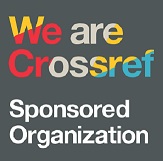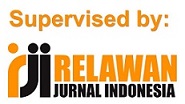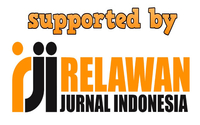MEANING-MAKING OF INTERNET MEMES TO CREATE HUMOROUS SENSE: FUNCTIONS AS SPEECH ACTS
Abstract
This research explored how the memes were created with multimodal elements that could make meaning to create a humorous sense and function as speech acts. With the complexity of meaning-making, nowadays, it had become a trend that people could communicate online through Memes. Semiotics provides how the combination of modes, media, and potential meanings, that were applied to make meaning in memes. At the same time, pragmatics proposes details on how memes can function as speech acts. This research adopted a qualitative method using multimodal analysis by Leeuwen (2005) and speech acts theory by Bach and Harnish (1980) that were employed as the theoretical framework. A total of 16 memes were retrieved and captured as JPG files from social media and other internet websites; therefore, documentation was the only technique used in this research. The results of the study showed that (1) the integration of semiotic resources such as mode, media, and meaning potentials in memes aided the readers to understand the background knowledge of memes (2) two types of communicative illocutionary acts were found in the memes: constative and directive illocutionary acts which function to express the emotion or opinions and question something (3) the effects of using internet memes could be seen through verbal and non-verbal perlocutionary acts which showed an agreement and had the same feeling as in the memes. Finally, the memes containing multimodal components composed of semiotic resources interacted creatively to make humorous sense, and it could aid the readers to communicate online.
Keywords
Full Text:
PDFReferences
Austin, J. . (1962). How to Do Things With Words. Cambridge: Harvard University Press.
Bach, K., & Harnish, R. M. (1980). Linguistic Communication and Speech Acts. Massachusetts, MA: The MIT Press. https://doi.org/10.2307/413908
Börzsei, L. K. (2013). Makes a Meme Instead: A Concise History of Internet Memes. New Media Studies Magazine, 7(March), 1–29.
Chovanec, J., & Tsakona, V. (2018). Investigating the Dynamics of Humor: towards a Theory of Interactional Humor. In The Dynamics of Interactional Humor: Creating and Negotiating Humor in Everyday Encounters (pp. 1–26). John Benjamins.
Davidson, P. (2009). The Language of Internet Memes. The Social Media Reader, 120–134.
Dawkins, R. (1989). The Selfish Gene (2d ed.). New York: Oxford University Press. https://doi.org/10.4324/9781912281251
De la Rosa-Carrillo, E. L. (2015). On the Language of Internet Memes. The University of Arizona, 9, 53–80. http://arizona.openrepository.com/arizona/handle/10150/556817
Denisova, A. (2019). Internet Memes and Society: Social, Cultural, and Political Contexts. In Internet Memes and Society: Social, Cultural, and Political Contexts. Routledge: New York. https://doi.org/10.4324/9780429469404
Eco, U. (1979). The Role of the Reader: Explorations in the Semiotics of Texts. Bloomington: Indiana University Press. https://doi.org/10.1353/phl.1980.0019
Grundlingh, L. (2017). Memes as Speech Acts. Social Semiotics, 28(2), 147–168. https://doi.org/10.1080/10350330.2017.1303020
Halliday, M. A. . (1978). Language as a social semiotic. Edward Arnold.
Jewitt, C. (2013). Multimodal Methods for Researching Digital Technologies. In S. Price, C. Jewitt, & B. Brown (Eds.), The SAGE Handbook of Digital Technology Research (pp. 250–265). London: Sage.
Jiang, Y., & Vásquez, C. (2020). Exploring local meaning-making resources A case study of a popular Chinese internet meme (biaoqingbao). Internet Pragmatics, 3(2), 260–282. https://doi.org/10.1075/ip.00042.jia
Johann, M., & Bülow, L. (2019). One Does Not Simply Create a Meme : Conditions for the Diffusion of Internet Memes. International Journal of Communication, 13, 1720–1742.
Jones, R. H. (2013). Multimodal Discourse Analysis. The Encyclopedia of Applied Linguistics. https://doi.org/10.1002/9781405198431.wbeal0813
Laksono, D. P., & Putranti, A. (2016). I Can Haz Stail: a Language Style of Lolcat Meme in Icanhas.Cheezburger.Com. Journal of Language and Literature, 16(01), 70–81. https://doi.org/10.24071/joll.2016.160109
Leeuwen, T. van. (2005). Introducing Social Semiotics. London: Routledge.
Leeuwen, T. van. (2015). Multimodality. In The Handbook of Discourse Analysis (2nd ed.). Wiley Blackwell. https://doi.org/10.4018/978-1-5225-8467-4.ch010
Milner, R. M. (2012). The World Made Meme: Discourse and Identity in Participatory Media. University of Kansas.
Schiffrin, A. (2005). Modelling Speech Acts in Conversational Discourse [The University of Leeds]. http://etheses.whiterose.ac.uk/1332/
Scollon, R., & LeVine, P. (2004). Multimodal Discourse Analysis as the Confluence of Discourse and Technology. In P. LeVine & R. Scollon (Eds.), Discourse and Technology: Multimodal Discourse Analysis (pp. 1–6). Washington, DC: Georgetown University Press. https://doi.org/10.1017/s0272263105390280
Searle, J. R. (2002). Speech Acts, Mind and Social Reality. In Speech Acts, Mind and Social Reality: Discussions with John R. Searle. Dordrecht: Kluwer Academic.
Sebeok, T. A. (2001). Signs: An introduction to semiotics. In Journal of Pragmatics (Second, Vol. 26, Issue 4). London: University of Toronto Press. https://doi.org/10.1016/0378-2166(96)82062-5
Shifman, L. (2014). Memes in Digital Culture. Cambridge, MA: MIT Press.
Vásquez, C., & Aslan, E. (2021). “Cats be Outside, How about Meow”: Multimodal Humor and Creativity in an Internet Meme. Journal of Pragmatics, 171, 101–117. https://doi.org/10.1016/j.pragma.2020.10.006
Wahyuningsih, W., & Nirmala, D. (2020). Perlocutionary Act of Euphemism in Indonesian Presidential Election Debate 2019. Indonesian Journal of EFL and Linguistics, 5(1), 113–127. https://doi.org/10.21462/ijefl.v5i1.230
Wiggins, B. E. (2019). The Discursive Power of Memes in Digital Culture: Ideology, Semiotics, and Intertextuality. In The Discursive Power of Memes in Digital Culture. https://doi.org/10.4324/9780429492303-2
Yule, G. (2006). The Study of Language (3rd ed.). New York: Cambridge University Press.
Yus, F. (2019). Multimodality in Memes: A Cyberpragmatic Approach. In Analyzing Digital Discourse: New Insights and Future Directions (Issue October, pp. 105–132). Switzerland: Palgrave McMillan. https://doi.org/10.1007/978-3-319-92663-6
DOI: https://doi.org/10.30743/ll.v5i2.4445
Refbacks
- There are currently no refbacks.
Fakultas Sastra
Universitas Islam Sumatera Utara (UISU), Medan
Jl. Sisingamangaraja Teladan Medan 20217
Telp. (061) 7869911, e-mail: language_literacy@sastra.uisu.ac.id









